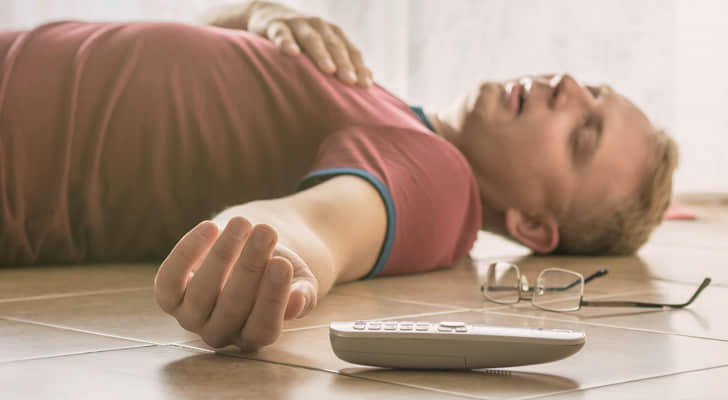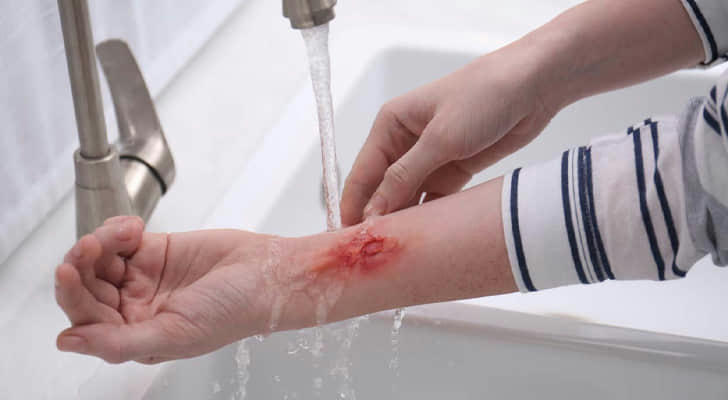"The Golden Ten Minutes": Mastering First Aid and Self-Rescue Techniques to Save Lives

Accidents can happen at any time in our daily lives. When a crisis strikes, knowing first aid and self-rescue techniques can mean the difference between life and death in the crucial "golden ten minutes." Research shows that the first ten minutes following a cardiac arrest are vital for survival. During this time, effective measures can be taken not only to help oneself but also to buy precious time for others in need.
Real-Life Case Study
Case Study: Rescuing from Cardiac Arrest
Wang, a young programmer, experienced sudden chest pain and lost consciousness while working out at the gym one day. The gym staff immediately called for emergency help and began performing cardiopulmonary resuscitation (CPR). Following his training, he placed his hands on Wang's chest, applying steady pressure at a rate of 100 to 120 compressions per minute. Meanwhile, a nearby gym-goer quickly retrieved an automated external defibrillator (AED). Within a few critical minutes before professional help arrived, they successfully revived Wang's heartbeat.
This case highlights the importance of being equipped with first aid knowledge and responding quickly during emergencies. It serves as a reminder that having these skills can be crucial in life-or-death situations.
How to Self-Rescue and Aid Others
In an emergency, knowing how to self-rescue and assist others is essential for everyone. Here are some common first aid techniques:
1. Cardiopulmonary Resuscitation (CPR):
○ Ensure the scene is safe, check for the victim’s responsiveness by calling their name and gently shaking them.
○ If unresponsive, immediately call for emergency help (e.g., 911) and start CPR.
○ Chest Compressions: Place your palms in the center of the victim's chest, interlock your fingers, and apply force while maintaining a rate of 100-120 compressions per minute.
○ Stopping Bleeding:
○ For bleeding wounds, use a clean cloth or bandage to apply direct pressure to the wound.
○ If the bleeding doesn’t stop, try to elevate the injured area to help reduce blood flow.
○ Responding to Choking:
○ For choking due to food or other objects, you can perform the Heimlich maneuver: Stand behind the victim, wrap your arms around their waist, and quickly thrust inward and upward to expel the obstruction.
○ Treating Burns:
○ Immediately rinse the burn under cool running water for at least 15 minutes to lower the temperature.
○ Avoid applying grease or ice to the burn, as this can cause further damage.

How to Seek Professional Help
In addition to self-rescue and helping others, it’s crucial to quickly contact professional emergency services when needed. Here’s how to effectively seek help:
1. Dial Emergency Numbers:
○ Call emergency services according to local regulations (e.g., 911 in the U.S., 119 in China). Clearly and concisely describe the nature of the emergency, including the location and the condition of the injured person.
○ Provide Specific Information:
○ While waiting for help, try to provide accurate information about the victim's level of consciousness, breathing status, and extent of bleeding to assist emergency personnel in their preparations.
○ Follow Professional Instructions:
○ Stay calm and listen carefully to the instructions from emergency responders once you’ve connected. Keep the victim reassured while waiting for help to arrive.

Everyday Precautions
To better handle unexpected situations, it’s important to pay attention to the following:
1. Learn First Aid Skills:
○ Regularly participate in first aid training to understand basic techniques and methods. This knowledge will give you the confidence and ability to respond in emergencies.
○ Stay Calm:
○ In a crisis, try to remain calm, as this will help you think more clearly and respond effectively, reducing chaos and panic.
○ Carry a First Aid Kit:
○ Keep a first aid kit at home and in your car, stocked with items like adhesive bandages, antiseptic wipes, gauze, a tourniquet, and a first aid manual to address emergencies promptly.
○ Know Your Surroundings:
○ Familiarize yourself with the locations of first aid facilities and hospitals in places you frequent to ensure quick access when necessary.
○ Share First Aid Knowledge:
○ Teach family and friends first aid skills to enhance everyone’s ability to respond in emergencies.
Conclusion
In critical moments, knowing first aid and self-rescue techniques can make the difference between life and death. The "golden ten minutes" provide an opportunity for everyone to become a lifesaver. By learning and mastering basic first aid skills, we not only protect ourselves but also become vital supporters for others in need. Let’s work together to raise awareness about first aid and be prepared to lend a helping hand in times of crisis. By applying this knowledge in our daily lives, we can be ready for unexpected events and truly realize the value of those "golden ten minutes."
